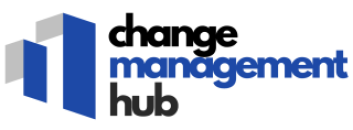
Understanding the Role of a Project Plan in Change Management
Defining the Importance of a Well-Structured Project Plan
In the realm of change management, a meticulously crafted project plan forms the cornerstone of successful outcomes. Its significance lies in acting as a blueprint that guides the project team through the various stages of the change process, from inception to completion. An effective project plan not only establishes a clear project scope but also delineates the quality standards and objectives the team aims to achieve.
By incorporating a robust planning template, organizations are empowered to map out a project schedule and assign specific tasks to team members. This thorough approach facilitates the seamless execution of multiple projects, ensuring that each is aligned with broader organizational goals. Through careful project planning, a plan template can act as a guiding map for project managers to create, manage, and track the progress of the change initiative.
While a standard project template offers the foundational structure, it is essential to tailor the plan project to the specific requirements and dynamics of the given change initiative. A plan example might include pre-defined sections for risk evaluation, task prioritization, and resource allocation to strengthen its applicability across various scenarios.
Ultimately, an effective management plan skilled in responsive adjustments can significantly mitigate unexpected challenges and enhance the overall quality of execution. To delve deeper into formulating a precise corrective action approach within your change management, you may find this crafting an effective corrective action report resource insightful.
Key Components of a Project Management Project Plan
Essential Elements for a Change Management Project Plan
When embarking on a change management initiative, a robust project plan acts as the backbone, guiding all activities and ensuring alignment with the overall goals. A well-defined plan not only directs but also establishes a clear roadmap for a successful change process.
Here are some of the key components that comprise an effective change management project plan:
- Project Scope: Clearly defining the project scope is vital. It involves determining the boundaries of what the change will cover and what it won't. A documented project scope helps to manage expectations and prevent scope creep.
- Project Goals and Objectives: Establishing precise goals and objectives provides a target for team members. Ensure these align with the broader objectives of the organization to drive the desired change results.
- Work Breakdown Structure (WBS): Breaking the project into smaller, manageable tasks helps in tracking progress and resources efficiently. A detailed WBS facilitates better control over project deliverables.
- Project Schedule: Developing a timeline is crucial for allocating resources and time effectively. This schedule or timeline should outline start and finish dates for each task to ensure milestones are met.
- Quality Standards: Establishing quality criteria ensures the final deliverables meet the required standards. This aspect of the plan guarantees consistent quality and enhances stakeholder satisfaction.
- Resource Management Plan: Effective resource allocation, including assigning roles and responsibilities among team members, ensures smooth project execution. Incorporating a plan template for tracking changes can also be beneficial.
Utilizing templates can simplify the process of creating these elements, making it easier to maintain consistency and quality throughout the project lifecycle. A well-structured project plan helps project managers and their teams to track progress, manage risks, and implement learnings as the change management process unfolds.
Identifying and Managing Risks in Change Management
Proactively Managing Change-Related Risks
In the realm of change management, identifying and managing risks form an integral part of a successful project plan. Risk management involves predicting potential obstacles and proactively addressing them, ensuring the process stays within the defined project scope, quality standards, and timeline. Effective risk management starts with a comprehensive understanding of potential risks that could impact your plan. These can range from shifts in market trends to unforeseen resource constraints. Each identified risk should be documented, assessed, and prioritized based on its potential impact.- Risk Identification: Compile a list of possible risks, drawing on the insights and experiences of the project team and key stakeholders. Consider using templates that facilitate collaborative brainstorming, ensuring all perspectives are captured.
- Risk Assessment: Evaluate the likelihood of each risk occurring and estimate its impact on the project. This assessment helps the project manager to focus efforts on high-risk areas that could severely derail the project’s goals.
- Mitigation Strategies: Develop specific action plans to minimize the impact of each identified risk. This could involve setting aside contingency resources or altering the project schedule to accommodate potential disruptions.
Engaging Stakeholders in the Change Process
Involving Key Stakeholders: A Pivotal Factor in Change Management
Effectively engaging stakeholders is an indispensable part of a project plan in change management. Stakeholders, ranging from team members to project sponsors, play crucial roles in successfully navigating the change process. Including them early in the change management planning can significantly enhance the overall success and quality of projects. To effectively involve stakeholders, consider the following steps:- Identify and Communicate: Clearly defining the roles and responsibilities ensures everyone understands the project scope and objectives. Communication is key to align the team and build a shared vision for the goals the project will achieve.
- Consistent Updates: Regularly updating stakeholders about the project schedules, plans, and progress can help maintain engagement and accountability. A well-designed project management plan template can ease this process by offering a structure to track milestones and deliverables.
- Feedback Mechanisms: Encouraging input and insights from stakeholders is vital. It allows for a more comprehensive management plan that reflects diverse perspectives and preempts potential risks.
- Leverage of Technology: Employing planning templates and management tools can make it simpler to gather and disseminate information. These tools help track project schedules, assess quality standards, and implement feedback.
Tools and Techniques for Effective Change Management
Utilizing Tools for Successful Planning
Successfully navigating change management requires a blend of strategic planning and the right tools. A project manager's toolkit is essential for ensuring every aspect of the management plan is meticulously laid out and executed. Utilizing a project management plan template can streamline the planning process, helping outline the project scope and tasks efficiently. These templates serve as a foundational blueprint, ensuring consistency and clarity across all projects.
Leveraging Project Management Software
In today's digital age, leveraging project management software can significantly enhance a project's quality and timeline adherence. These tools offer features such as project scheduling, task assignments, and risk management capabilities. The aim is to keep the team on track, ensuring they meet the project's goals and maintain established quality standards. Project managers can customize these software platforms to fit specific project needs, creating a more tailor-made approach to management.
Effective Communication Solutions
Communication is a cornerstone of any successful project. Utilizing communication tools to facilitate seamless interaction among team members is crucial. These solutions help in addressing any concerns or suggestions swiftly, ensuring the project sponsor and stakeholders remain informed of any changes to the plan project. An engaging and open communication process empowers the project team, reinforcing commitment towards achieving project milestones.
Templates for Clarity and Consistency
Consistency is key in effective change management. Using planning templates ensures that the project team operates under a shared understanding of the project scope and schedule. It also enables the project manager to track progress and adjust plans as necessary. These templates, or plan examples, serve as references for team members, providing a clear and concise outline of their responsibilities and the project's timeline.
Continuous Learning and Adaptation
A successful project is one where the team learns and adapts continuously. Incorporating feedback and adjusting the plan as needed is part of effective change management. The ability to pivot and adapt ensures that the team can overcome any obstacles while maintaining quality and meeting project deadlines. Consistent evaluation of the management plan allows room for improvement and ensures alignment with the initial goals set by the project sponsor.
Evaluating and Adjusting the Project Plan
Assessing Progress and Making Adjustments
Evaluating the effectiveness of a project plan is a continuous practice in the realm of change management. To ensure the project team meets the desired goals, it is crucial to consistently track and analyze the progress of tasks and activities against the project timeline and scope. Here’s how you can approach this assessment process:- Monitor Quality and Progress: Consistent monitoring of quality standards is vital. Utilize quality metrics and feedback mechanisms to determine if the deliverables meet the established criteria. This will assist the project manager in tracking progress effectively and making informed decisions.
- Compare Against Baselines: Regularly compare the actual project work with the initial plan example and baselines set at the onset. Discrepancies should be addressed quickly to preserve the project's integrity.
- Adjust the Planning Template as Needed: Circumstances often change, and the management plan must adapt to stay relevant. Revise the project's plan template to reflect changes in resources, timelines, or project scope without compromising the end goals.
- Engage the Project Team and Stakeholders: Open communication with team members and stakeholders fosters a collaborative environment where adjustments can be discussed transparently. This shared understanding helps in realigning efforts with the project's objectives.
- Risk Management: Assessing risks is not a one-time activity. Periodic evaluations allow for the identification of new risks and ensure that existing ones are managed effectively. Update the project's risk management strategies accordingly to safeguard against potential roadblocks.













